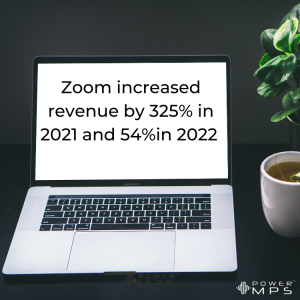COVID Killed the Traditional Office, Not Traditional Office Needs
Response to the COVID-19 pandemic changed the world. While some businesses saw the potential for permanent change and began adapting, others waited patiently for things to return to “normal.” Unfortunately, two years on, most major employers are discovering that “normal” may never be the same as back in 2019.
Despite governments relaxing most restrictions, the majority of employees expect to work remotely for at least a portion of their regular hours. Some would even take a pay cut of up to ten percent to stay at home. Today, a mere four percent of employers have plans to bring everyone back into the office full-time.
But a non-traditional workplace still needs to perform traditional tasks.
Keeping Up With Employee Communication

One of the biggest upsets for employers during lockdowns was ensuring an easy way for employees to continue communicating. Some businesses turned to group and individual chat applications. Others selected project organization platforms. But the most significant adoption rate throughout the pandemic was in video meeting technologies like Zoom.
In today’s ongoing remote work environment, video conferencing continues to be a large part of the technology mix. Even employees working in the office are still subject to video calls with clients, partners, and even internal individuals and departments. The continued popularity and prevalence of video conferencing is one of the big reasons many employees are still advocates for remote work. But, with so much of the workforce already transitioning to hybrid and remote work, “Zoom Calls” are quickly becoming seen as a necessary part of modern business.
And as employers continue to build up their hybrid and remote work programs, maintaining company culture has become a large part of the need to communicate. As a result, many human resources departments are working to find new ways to leverage Google, Zoom, and other platforms to build company cohesiveness. They use these systems to generate fun activities, provide training tools, and keep people informed.
Digital Still Hasn’t Replaced Basic Supplies
Whether working from the business office or your home office, employees still need pens, notepads, highlighters, pencils, and other essential supplies. Attempting to operate without their everyday office items has been shown to negatively affect productivity. Lower productivity leads to decreased profits for the business, which equals loss–and nobody has time for any more of that.
Offices with remote and hybrid workers are encouraged to continue providing the same supplies used in a full-time office. However, in situations where the expense of supplies for more than one location per employee is an issue, offering travel totes is an excellent solution. In addition, hybrid workers who typically share desk space with others are encouraged to keep their office essentials with them in either location. This practice both keeps the workspace clean for employees who share desks and ensures workers have access to all of the same materials no matter where they are.
On the other hand, what hybrid and remote offices are saving on stocking coffee, snacks, and other communal supplies can be easily funneled into providing the items needed for comfortable and productive work across locations. Items like sit-to-stand desks, quality headphones, and computer monitors are just a few of the supplies and equipment most likely to help employees perform their daily tasks efficiently.
Print Is Still Essential
Despite the new office environment’s big lean toward digital, printing and paper are still an expected and fundamental part of operations. Over half (64%) of organizations consider printing a critical function. Moreover, some experts consider printing and scanning even more essential to hybrid and remote offices.
Many workers prefer to make notes, red-line, and edit documents in a physical format. Visceral interaction with documentation has been proven to help employees understand and recall information. And being able to scan notes and documents into a digital format improves employee ability to store and share information effortlessly.
That is why office printer manufacturers are providing many new features that support the needs of hybrid and remote offices. These options are heavily weighted toward improved security to help IT departments meet data compliance. Security features include password access, data encryption, network authentication, stored data protection, and many others.
For the standard employee, there is a wide range of convenience options. Things like cloud capability and mobile printing are just a couple of the new services many of today’s latest printers offer.
Finance departments worried about the costs of new machines or the potential for increased monthly expenses can also benefit from the latest printer technologies. Higher workload capacities and lower running costs are just two features designed to make new printers more palatable to the pocketbook.
Companies looking to further manage costs and alleviate concerns around printer functionality and management also have options thanks to managed print services and other printer leasing and service businesses.
Today’s hybrid and remote work world presents new challenges for companies looking to lower costs while meeting the needs of their employees and clients. Fortunately, printer service partners, new printing technologies, office supply options, and communication technologies can help meet workers’ continued “traditional” needs – whether at home or in the office.


Comments (0)